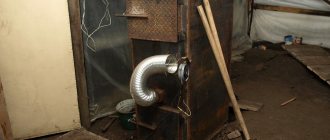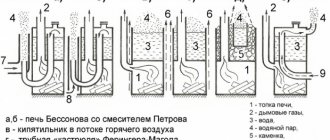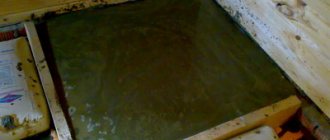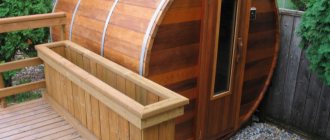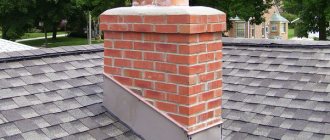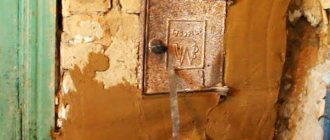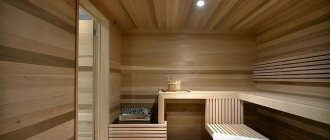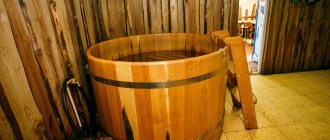A homemade metal stove is perfect for heating a greenhouse, garage, work space, and even a living room. To assemble the unit in question, you can use sheets of metal, barrels, pipes and even fire extinguishers of a suitable size. The procedure for making the stove remains the same. Differences are present only in the initial stages of corps preparation.
DIY metal stove
Making a bath unit
One of the best options for a heating device for a bath is a metal stove made of sheet steel, lined with brick.
Such a homemade sauna stove is not mobile, but it is fireproof, which means it can be installed in a residential building and even in a wooden sauna building. To build it, you will need the following tools:
- welding equipment;
- Bulgarian;
- diodes 3-4 millimeters.
You also need to have sheets of iron 2–3 millimeters thick, and reinforcement 8–10 millimeters.
An important point is that when arranging such a stove, it is necessary to choose the correct cross-section for the chimney, since the draft force depends on this, which is also influenced by weather conditions: the warmer and more humid the air, the weaker it is.
If the chimney is not wide enough, gases and air will begin to mix before they have time to escape. This creates a smoke plug. If the diameter of the pipe is too large, then the gases in it will move too slowly, and the surface of the inner walls will quickly become clogged.
Do-it-yourself iron sauna stoves are built like this:
- First of all, the foundation is laid out. For it, a wooden formwork 20 centimeters high is built so that a square measuring 1x1 meter is formed.
- The reinforcement is mounted in one layer, making a mesh of rods with cells measuring 20x20 centimeters. It is necessary that the reinforcement does not touch the ground, so it is supported on pre-installed pegs and tied in weight.
- Prepare a cement-sand mortar in a ratio of 1:3. For it, take 1 part of cement no lower than grade M400 and 3 parts of fine river sand. To add strength, some crushed stone is added to the mixture.
- The solution is poured into the formwork, covered with polyethylene film and left to dry for 4 weeks. Once a day, the concrete must be sprayed with cold water and covered again, otherwise it will begin to crack.
- Next, you need to take the rear wheel rim and weld all the holes on it, leaving only the central one.
- The convex top is cut off from the second rim, the first one is inserted into it and welded. The main thing is to create a tight connection, because there will be hot liquid inside.
- On the inside of the second rim, at an equal distance from one another, reinforcement is welded on three sides. It needs to rest against the pipe to give the structure rigidity.
- A round 25 mm hole is created at the bottom of the first rim and a pipe of the appropriate cross-section is welded to it. A faucet is screwed into it to drain water.
- Next, exact copies of the two rims are made. A copy of the second of them is placed on the pipe, the copy of the first rim is turned over and welded to the end of the pipe. A second copy of the second rim is attached to the top and reinforced with reinforcement for rigidity.
- When the foundation mortar has hardened, the formwork is removed and bricks are laid using a clay-based mixture.
- The location of the furnace is completely covered with bricks to protect against fire.
- The base is made of brick, and from the second row they begin to lay out an ash pit with a blower. By means of it, ash is removed and thereby ensures the flow of air inside, which helps the appearance of good draft. The length of the ash chamber should be less than that of the firebox.
- Install the blower door, line it with bricks and lay another row. A grate is placed on the ash pit shaft.
- After the grate, two rows of bricks are laid out, leaving space for the firebox door. Two more rows are created on top.
- The masonry is allowed to dry for 2 weeks, ensuring air circulation. Then the stove needs to be heated with wood chips for 1.5 - 2 hours.
- The finished pipe is installed on the brick structure. There is a heater and a container for hot water on it.
- The weight and dimensions of the stove are quite large, so it is better to divide it into its component parts and assemble it inside the bathhouse on site.
- The top of the chimney is reinforced with reinforcement rods, welding one end to the pipe and resting the other against the wall. To attach it to the wall, use a metal plate or a steel angle.
Making a stove with your own hands
Initially, you should familiarize yourself with the drawings of stoves made of metal. An important nuance is that in a heated oven it is quite difficult to constantly maintain a uniform temperature.
In order not to overheat, you need to do the following:Furnace lining. To do this, you need to line the inside of the firebox with refractory bricks. This way, only the heater will warm up. Even at the design stage, make the firebox larger, taking into account the space for the lining.
Unfortunately, the disadvantages of this method include the production of hot smoke (reduces fire safety). Cooling can be done by installing a tank or heater on a pipe.
Installing a brick screen near the stove in a metal bathhouse with your own hands. The screen can be made of ceramics. Do not forget to leave space for installing a door to control the level of air heating.
Models and manufacturers
Selecting a quality product is a troublesome and difficult task. You can buy an inexpensive long-burning wood stove for heating and use it with pleasure for decades
It is important to clearly understand what you need and why, accurately calculate the power of the installation, find out its autonomy and other technical features. Then the purchase will 100% please you and bring maximum benefit
Below are the most popular types of units from leading industry manufacturers.
Buleryan
Heaters with a colorful name originate from distant Canada. They are distinguished by reliability and high heat dissipation. They are a cylindrical steel firebox with a wall thickness of 6 mm. The loading chamber door is located on the end side, which simplifies the loading of firewood. There are pipes along the body for convection of warm air masses.
Structurally, the device is divided into two parts; fuel briquettes are loaded into the first half, and the released pyrolysis gas mixture is burned in the second. The hole for connecting the smoker is on the side opposite the loading flap.
Butakov furnaces
Such heat generators are intended not only for heating residential buildings in severe frosts, but also for heating baths.
There are several varieties of this equipment that differ in performance characteristics. The model with the loud name “Student” has a power reserve of 9 kW with a weight of 70 kg and provides excellent heating of up to 150 cubic meters of space. The most powerful device is named “Akademik” - with a mass of 300 kg, it perfectly heats rooms up to 1200 m3. Intermediate lines have also been developed - “Associate Professor”, “Engineer” and “Professor”, which are capable of heating buildings with a volume of 250 to 1 thousand m3.
Breneran
A long-burning wood-burning stove from a domestic manufacturer is an improved analogue of Canadian equipment with a similar name. It is manufactured on modern high-tech production lines, in accordance with all existing international quality and safety standards. The model range is referred to by the abbreviation AOT with a numerical serial number. The lower the index, the lower the weight of the unit and its functionality. The spatial volume that it can heat directly depends on the power of the device. Thus, a 6 kW installation copes with heating an area of 56 m2, and a 35 kW installation can warm up to 260 m2.
Some models are equipped with outlets with a water circuit connection and beautiful doors made of fireproof glass. The disadvantage of "Breneran" is the high probability of moisture getting into the room where the stove is located. This is due to insufficient tightness of the chimney connecting unit.
Teplodar
An excellent quality stove from a Russian manufacturer is designed for heating a home in our harsh winters. Devices from this brand are distinguished by their compact size, excellent efficiency and relatively low weight.
The line includes many different format variations:
- “Vertical” is a heater equipped with a surface for cooking food.
- “Matrix-200” is capable of heating rooms up to 200 m2.
- "Siberia" - warms up a much smaller space, but much faster than its analogues.
Vesuvius
A good, compact, Russian-made installation is intended for a summer house, garage, bathhouse, and other outbuildings and residential buildings. The heat exchanger is selected based on the technical parameters of the heated premises.
Termofor
The design development of the domestic company includes several products with very colorful names. Compactness and high performance with economical fuel consumption make the device popular among the population. Depending on the type, the unit is capable of heating a space with a volume of 55 to 255 m3.
Ermak
The reliable installation features miniature dimensions, light weight, and excellent heat output. The boilers have proven themselves well and can be installed in both commercial and residential buildings.
Bakhta
This is a heating and cooking stove-fireplace made of durable and heat-resistant cast iron of the ChH-1 brand. The high quality of the heating device, versatility, wear resistance and visual appeal are its main advantages.
How to install the stove correctly
- The first priority is choosing the installation location and measuring the area. Everything must comply with safety regulations. The stove should be installed at a distance of at least 60 cm from the plaster and 80 cm from the wallpaper.
- The stove must stand on a concrete slab (at least 0.7 cm), asbestos or basalt cardboard.
- The furnace elements are assembled according to the instructions, after which it is necessary to check the tightness of the assembled structure.
- A protective element must be attached above the stove, on the ceiling.
- Installation of a chimney (it is better to choose a round option - rectangular ones have worse draft).
- If you want to paint the stove, then any paint will not work for this. You need to choose special enamels (silicate or organic).
- Call a fire inspector who will check the correct installation.
- Test check of the entire system.
Long-burning potbelly stove
The potbelly stove has become a real symbol of Russia since the times of the Revolution and Civil War.
This is the name given to the simplest iron stove of a cylindrical or cubic shape. Its advantage was that the smoke channel - an ordinary iron pipe - could be taken out anywhere - through a wall or roof, into a window.
Taking the simplicity and practicality of a potbelly stove, you can make a small stove that will embody some simple ideas that significantly increase its efficiency, safety and environmental friendliness.
Basic scheme
The classic potbelly stove has a cylindrical design. However, it is difficult to do this when making it yourself, so you need to take a cube or parallelepiped as a basis.
Contains the following structural elements:
- Firebox. This is the chamber in which fuel combustion occurs, most often wood. The walls and bottom of the firebox must be thick, since they bear the main temperature load. There is a door in the front for storing firewood in the firebox; if desired, it can even be equipped with heat-resistant glass.
- Ash pit (ash pan). The compartment under the firebox is separated from it by a grate. The ash pan is also equipped with a door, only of a smaller size. It is used to remove ash and ash. which fall through the grate from burnt firewood. But this is not the only point of the ash pan - air is sucked in through the ash door and passes through the fuel layer from below, ensuring the best combustion.
- Smoke channel. To arrange it, a round hole is cut out in the upper part of the stove, a piece of steel pipe is inserted into it and scalded. In the future, you can attach other sections of the pipe here or use a factory sandwich chimney with special locks.
Expert opinion Dmitry Konstantinovich Levin
Some manufacturers of homemade stoves believe that the design with a blower and grate is not suitable for a sauna stove - it creates too much draft, which prevents complete combustion of the wood. Instead, it is proposed to lay the firewood directly on the bottom of the stove, and ensure air flow by drilling several round holes in the lower part of the combustion door and equipping them with a sliding damper.
How to make a door
The door is made of a thick sheet of metal. For fastening, you can use store-bought factory hinges or make your own. To seal the fit, an asbestos thread is used - it is wedged in a groove cut by a grinder.
If there is a suitable sheet of heat-resistant glass, it is inserted as follows: cut a window in the door and grind the cut area. Then they lay the glass, lay asbestos fiber around the perimeter, invisibly from the outside of the part, after which, using small steel tongues, I make tacks on each side.
The turning handle of the latch is easiest to make from the outside.
Homemade secondary gas afterburning system
The main disadvantage of a potbelly stove is its low efficiency. A stream of air passes quickly and strongly through the entire oven, carrying with it not only unburned food, but also heat. As a result, the case does not warm up sufficiently and gives off less heat. To solve this problem, a simple but ingenious modification was invented.
By placing two steel sheets above the firebox, the smoke passage channel can be significantly increased the length of the path that burnt gases travel before exiting through the chimney opening:
- The first horizontal sheet is welded directly above the firebox so that a channel remains for the passage of gases in the rear part of the stove.
- The next sheet is cooked higher, offset so that the passage is now at the front of the oven. It turns out that smoke, gases and heat, once in this labyrinth, snake through it all the way to the chimney. Along the way, they give off all the accumulated heat to the sheets, side walls and top plate of the oven.
If you drill several holes from the bottom from the back and cover them with a screen made of steel sheet, then at the top point, when fresh air, but already heated by the screen wall, meets unburned gases, the process of afterburning secondary gases will take place in the channel, which will lead to a significant increase in efficiency ovens.
Pros and cons of metal stoves
Metal is a durable material, but it is both ductile and malleable, which allows it to be given almost any design. It is able to withstand high loads and temperature changes. There are many methods for processing metals, so various technologies can be used in the manufacture of furnaces.
Since the main competitor of metal units in the heating equipment market is brick structures, a comparison of technical characteristics will be between them. For example, the efficiency of brick stoves is about 70%. As for metal products, this figure reaches 83%, while they weigh much less and are more affordable.
Another important advantage of a metal stove for a home is the integrity of the structure, so it can be moved and transported without any problems. This is impossible to do with large brick structures.
Due to their low weight, metal units do not require a separate solid foundation, and installation only involves the construction of a chimney. During the non-heating season, the mobile iron product can be moved to a utility room or shed and thereby free up space in the room.
The metal used as the material for manufacturing the unit has high thermal conductivity, as a result of which it heats up quickly, but also cools down similarly. Such heating helps to increase efficiency. In brick stoves, you must first wait until the internal heat exchange begins, and before that, during the heating process, all the resulting heat goes into the chimney.
Almost all the advantages of metal units are based on the characteristics of this material - it is quite dense, non-porous, and does not become damp under the influence of condensation like bricks. They are not at risk of long breaks in work; they do not need booster firing after downtime.
Metal stoves for summer cottages are easier to certify and it is easier to obtain a permit for them from the fire inspectorate, which will save both money and time. There are models on sale that do not require approval at all, but only the installation of an autonomous chimney.
But metal units also have disadvantages:
- They do not “breathe”, since, unlike brick, metal is not a porous material. When a brick oven cools, it absorbs moisture from the air and releases it when heated. As a result, a constant balance of humidity is created in the room, providing a feeling of comfort. Sometimes metal units are faced with brick to achieve a similar effect, but it is not as effective, and the structure loses its lightness and mobility.
- As already mentioned, metal quickly heats up and cools down, so in order to maintain heat in the house, the stove made from it has to be fired constantly, otherwise it will completely cool down in a few hours. This problem can be solved by manufacturing a metal unit that burns for a long time. But in any case, it is a permanent source that creates the risk of fire and fumes, and for this reason it cannot be left unattended for a long time.
- The main disadvantage of metal stoves is their fire hazard. When heated, their walls become heated to such an extent that they can cause ignition of objects, finishing materials, and floor coverings located in close proximity to the fire. Therefore, it is not easy to obtain permission from the Ministry of Emergency Situations to use an iron unit in a residential building - a separate boiler room will have to be equipped for it.
- The service life of a metal stove for home is up to 20 years. With frequent use, even thick metal burns out, as a result of which the walls of the product become thinner. But in just a decade of operation, the stove fully pays for its cost due to reduced fuel costs and the ability to replace the unit without repairs or redevelopment of premises.
Types of structures
They differ in structure and operating principles. Let's look at each type in more detail.
Open
The stones are laid on top of the stove structure and are not covered with anything. Due to this, the steam room warms up faster, reaching temperatures of up to 100 degrees. But the humidity in the room is low, so the heat turns out dry.
The product consists of three parts:
- fireboxes;
- compartments for stones;
- containers with water.
There should be few stones, otherwise the top layer will not warm up well and the steam room will not be warm enough.
To increase the level of humidity and the release of water vapor, the hot stones are simply watered. One or two ladles will be enough - this will give up to 15% humidity.
To increase the level of fire safety and reduce the risk of burns, it is recommended to lay fire-resistant bricks around the walls of the furnace or make a partition made of wood.
To heat a sauna, it is important that as much of the stove area as possible is in contact with the air space. This contributes to faster heating of the air in the steam room
Closed (lined with brick or stone)
If wood fuel is chosen for heating, you will have to prepare large reserves in advance. Such a stove takes a long time to reach the desired temperature, but, having reached the desired level, gives good heat transfer and retains heat for a long time.
Closed structures are great for large baths, where there is not only a steam room, a wash room, a dressing room, but also a relaxation room.
One of the advantages is closed stones. Therefore, there is no risk of getting burned.
In factory economical models, the stove has a double casing with a gap for air exchange between the walls.
Combined
For most manufacturers, the design consists of a high box with gratings and double valves (performs the function of a firebox). A chimney pipe emerges from the neck of the box. Stones are placed in the neck here.
There are devices available for sale with combined fuel types:
- gas-wood;
- electric wood-burning.
They do not need to be constantly monitored. Simply adjust to the desired temperature.
By design they are divided into 3 types:
- Monoblock. With heat exchanger, combustion chamber. Gas burner of a fixed type, covered with a steel sheet.
- Paired. They have two separate combustion chambers for wood and gas.
- Reconfigurable. Universal device. Can be modified for each fuel.
The first two types do not need to be reconfigured, since you can switch from one type of fuel to another.
Gas is used as main gas or liquefied in cylinders.
The electric-wood-burning design allows you to successfully heat the bathhouse using electricity or wood (optional). Moreover, firewood is considered the main raw material. When they burn out and the temperature drops, the electric heater automatically starts working. There are two heating elements on the sides of the product. Such stoves operate on a 220 W network, with a three-phase voltage of 380 V.
The owners can choose which fuel to heat the bathhouse with. But such designs are many times more expensive than simple wood-burning stoves.
Installation Features
The first step is to decide on the location. It will depend on the type of oven. For example, design convectors can be installed anywhere, but infrared stoves need to be mounted further from external walls, since due to temperature changes outside and in the house there will be high heat loss, which reduces the efficiency of heating equipment.
Stove-fireplace in the interior of the house
Usually a foundation is not required for the stove, but if its weight exceeds 150 kilograms, then you need to make a screed for it to strengthen the structure. It is also necessary to comply with fire safety rules and maintain a distance from the walls within 80 cm. If polystyrene, plastic and others that are easily flammable or melt when exposed to high temperatures are used as finishing materials on the walls, the distance must be increased to 1.2-1. 5 m. For wooden buildings, special permission is required to use iron swords.
When the place is ready and the chimney is equipped, all that remains is to lay fireproof insulation, install the stove and connect it to the chimney. You cannot ignite the structure yourself for the first time; first, a fire safety inspector is called to check it.
A permit is also required to install a homemade stove. To avoid problems and fines with all authorities, it is better to purchase a finished product, since it is less hassle, but more expensive. Therefore, which option to choose is up to the owner.
You can start heating when the inspector checks everything and points out any shortcomings that are recommended to be eliminated. Typically, difficulties arise with connecting equipment to the chimney, since the quality of the stove and ventilation will depend on the quality of work.
If connected incorrectly, you can cause fumes to leak into the room.
Installation option with brickwork
The metal stove becomes very hot during operation, which can cause injury or burns if someone accidentally leans against it. In this regard, many people line the stove with brick. Masonry features:
- Before starting work, you need to calculate how many bricks you will need to determine the final weight of the structure. A metal stove with a brick lining will weigh quite a lot, and the floor may not support it. If the structure weighs more than 600 kg, an additional foundation must be made.
- The brick cannot be laid flush against the iron stove; you need to make a gap of about 5 centimeters.
- If the foundation is not made, then a metal sheet with a thickness of at least 4 mm is laid on the floor to protect against heat.
- Masonry mortar should be made on clay, not concrete. Clay is more plastic and porous, while concrete cracks and deforms when exposed to high temperatures.
- The top can be left open or made in an arc for an attractive appearance.
Example drawings
Some stoves are easier to buy than to cook and install yourself. For example, you can cook a small potbelly stove; there is nothing difficult about it. Below are several drawing options.
Potbelly stove diagram
Oven with stove
Iron stove-heater
How wood stoves work
One of the features of heating devices is a secondary combustion chamber, which is characterized by slow combustion of fuel. Simply put, the logs in the firebox do not burn, but smolder. This effect is achieved by adjusting the amount of air entering the fuel chamber.
The combustion chamber is divided into two compartments. When wood is smoldering, unburnt combustible gas enters the second compartment of the chamber, where additional air is supplied from the injection pipes, after which the gas burns out completely, and the wood remains to smolder further.
Unburned gas from the main combustion chamber enters the additional combustion chamber, where, after mixing with an additional portion of air, it ignites, releasing additional thermal energy
Among the advantages of the system, it is worth noting: an increase in the operating life of the devices, greater efficiency - the stove operates for 8-9 hours on one load of firewood.
There are a few more disadvantages: the system only works on dry wood, the combustion mode will have to be constantly adjusted, which is somewhat inconvenient. It is also necessary to constantly monitor the cleanliness of the chimney and periodically clean it.
Classification of furnace units
Most often, homemade stoves are made with cooking surfaces.
According to the characteristics of the device they are made:
- chamber;
- duct;
- bell-shaped
In chamber stoves, flue gases enter a special chamber and are completely burned there due to natural circulation. Their design creates a similarity to the burning of an ordinary fire in a confined space. In domestic models, the combustion compartment is connected to the afterburning compartment into a single module called the crucible. Its vaulted shape ensures complete combustion of fuel. An example of such a design is the classic Russian stove.
In a ducted unit, the flue gases first burn out, then gradually cool down and move through the channels located between the partitions. When moving, they give off heat to the furnace body. There is no afterburning inside until the temperature in the combustion chamber reaches 400 degrees. The efficiency of these devices does not exceed 60%.
In a bell-type furnace, combustion products move to the roof of a special bell and linger there, burning out completely. Then the gases sink to the bottom and give off heat to the body. To kindle such a unit, it is enough to warm up only a small area of the hood. Its efficiency can be 75%.
Means for manufacturing and the process itself
If you want to make a thematic unit, you will have to look at a lot of photos of metal stoves made by yourself, then draw up a drawing and arm yourself with:
- Welding equipment with electrodes;
- Sheet metal or “donor” structures;
- Steel corners;
- Grinder with cutting wheel;
- Large and medium hammers;
- Reinforcement with a diameter of 8 mm;
- Measuring tools - tape measure, corner;
- Use a pencil or sharp nail to draw lines.
When all the tools are collected, you can proceed directly to the event:
- Cutting a pipe and 5 rectangles using a grinder;
- Butt welding of steel or cast iron sheets with a welding machine;
- Welding the bottom to the walls, followed by checking the evenness of the finished structure;
- Marking on the walls of the barrel the places where the firebox, ash pan, and chimney will be located;
- Welding the corners to the “barrel” at a level of 10 cm from its bottom (this is necessary for installing the grate);
- Making grate bars from scraps that can be taken from a 2-centimeter diameter pipe or corresponding metal rods;
- Fixing the tubes and welding them;
- Welding two reinforcement sections at the top of the structure to organize the reflector;
- Welding the lid to the “barrel” (the first one should already have a hole for the chimney);
- Making door handles from pipes or plates;
- Making legs from corners or fittings;
- Organizing a chimney using a 135-180 mm pipe;
- Creating a rotary damper at the bottom of the chimney;
- Furnace installation.
Manufacturing a metal furnace is a completely feasible task. You just need to approach the corresponding project slowly and gradually. Then the finished result will not disappoint.
Simple heater for a summer house
Such a heating metal stove is well suited for quickly providing heat to a small bathhouse or even a sauna.
The main advantages are that it is mobile and easy to manufacture.
Preparing for vaping takes 1.5 hours, the walls heat up quickly. One caveat - you need to attach 2 chimneys to the stove. The first will participate in heating the room itself, the second will remove carbon monoxide.
What does the oven consist of:
- Steel - iron sheets of at least 3 mm.
- It is better to make the firebox from thicker steel -6 mm.
- The kit also includes latches and a metal grill.
This structure can be assembled using a welding machine. Such sets are purchased in a disassembled state, the instructions are already included. Designing a metal stove will not be difficult, as it will fully comply with fire safety rules.
Main manufacturers
Let's look at the most popular manufacturers on the modern metal furnace market.
Teplodar
Teplodar - model “Vertical” (increased long-burning mode gives 8 hours of heating without adding fuel), “Stove” is equipped with a hob with removable rings, “Top Model” and “Matrix” can act as a fireplace due to fireproof glass in the doors , from where the flame is visible. The T-80 model can be equipped with a smoke exhaust.
The stoves of this manufacturer are designed to heat houses with an area of 80-300 m3, and the cost is scattered within 10-25 thousand rubles.
Ephel and Bayard
Efel is a Belgian manufacturer that leads the European home heating technology market. Thus, the “Harmony” model has a power of 12.5 kW and runs on wood and coal with a burning duration of 10 hours. That is, the oven can work all night.
The cost of such a stove is high - from 130 thousand rubles. Bayard 12 is a classic model with a hob and minimal gas emissions (0.28%). Its price is approximately 110 thousand rubles.
Eco fireplace
Another reliable company is Ecofireplace. It produces stoves that combine quality, safety and beauty. High-quality steel is used, and the facade is finished with tiles - this is aesthetically pleasing.
Thus, the Bavaria Arch model with a cast iron grate and heat-resistant glass on the doors opens up a view of the flame. This wall-mounted stove has economical fuel consumption (usually wood) and a glass self-cleaning mechanism. Such models cost about 40 thousand rubles.
The Bavaria Baroque model with a cast iron hob and a 6 mm thick fireproof steel body provides an efficiency of 78%.
Meta
produces wood-burning stoves that are maximally adapted to the Russian climate. All models have a hob with durable cast iron burners, are compact and safe.
Thus, the “Narva” series with ceramic lining and fire-resistant paint on top of a metal body is equipped with ash pans, firewood, and a glass combustion door. Its power is 6 kW and is capable of heating a house or cottage of 60 m2. Its price in the budget segment is 20 thousand rubles. "Meta Gnome-2" is the most compact model from the Meta manufacturer. Its dimensions are 363*502*640 mm and weighs 38 kg, and its power is 5 kW, which is suitable for heating a room of 50 m2.
Termofor
Finally, the Termofor company. Small-sized models for dachas and outbuildings “Selenga”, “Pichuga”, “Student”, “Avoska”, “Cinderella” are known here, which are easily portable, as well as models for heating the house - “Turbo”, “Normal”, air-heating models – “Associate Professor”, “Professor”, “Butakov”.
The latest options are very large and are permanently mounted. Prices range from 10-50 thousand rubles. Reviews about Selenga are very good: it is a beautiful oriental-style model that saves fuel well and can heat a house of 85 m2.
Video description
An example of a vertical stove with a closed, insulated heater is shown in the video:
Above the heater, a water compartment is fenced off with another horizontal spacer and equipped with a tap. Since the water in the “blackie” pipe quickly becomes red from rust, it is often replaced with a stainless steel tank.
Without special electrodes and skills in such work, it is difficult to qualitatively weld ferrous metal with stainless steel. It is better to buy a ready-made tank with a section of the chimney already installed in it and place it on the heater.
Tank for installation on a stove Source prom.st
If space allows, the water tank can be installed separately, connecting it to the firebox with a piece of pipe. One end of it is welded to the wall of the firebox, and the second open end is inserted into the tank, into the lower part of the side wall.
Suitable pipe sizes
Steel pipe as the main raw material for the furnace has a number of advantages. Among them:
- resistance to damage;
- good level of heat transfer;
- rapid heating of the room;
- minimal expansion when heated;
- use of any type of fuel;
- minimum number of welds.
The disadvantages of a metal stove are the same rapid cooling of the room as heating, uneven distribution of heat in the room. To eliminate them, the stove is often lined with bricks.
530 mm
For a steam room of standard sizes, a pipe measuring 530 millimeters is good. A stove made from it will be quite powerful; the wood will burn for a long time, providing good performance. Available in horizontal and vertical versions.
640 mm
A good material option for a large steam room in a bath complex. The large firebox allows you to place a lot of firewood at once, increasing the break between loads to 8 hours.
426 mm
This diameter is enough for a small steam room in a seasonal building, where bathing procedures are combined with washing or dousing with cold water in one room.
It is important to note that cast pipes without seams are an excellent option for small furnace parts; their diameter does not exceed 250 mm. To make the main part of the furnace, it is better to take pieces of spiral pipes - they are reliable and will cost the same as scrap metal. If you can’t find these, you should take straight-seam ones.
Tips for use
- The more densely the wood is stacked in the stove (this increases the smoldering time), the greater the fuel savings.
- Regular chimney cleaning is an essential safety measure.
- To ensure that no one touches the stove or gets burned on the structure, you can install screens or cover the metal body with bricks.
- If the oven door is glass, then it will constantly turn black from soot. It is better to clean before the glass has cooled, otherwise you will have to deal with resin. Cleaning can be done with regular glass cleaner and a sponge or newspaper. You should not use metal scrapers as they will cause scratches.
- Make sure that the metal parts (especially the grate) do not burn through. They need to be changed in a timely manner.
- The ash pan needs to be inspected and cleaned regularly.
A metal stove for a wood-burning home is an effective solution to the heating problem, which is popular due to its intuitive operating principle and easy maintenance. When choosing from the presented options, you should take into account not only the cost, but also the technical characteristics and reviews of owners who already own one or another model.
Choosing the optimal oven size
The first step is to calculate the volume of the heated room. Therefore, we measure the width, length, height of the steam room and multiply between each other. The result must be divided by two. The resulting figure is the approximate number of kilowatts that will be required to heat the room. But you need to take into account that there will still be stones on top that will have to be heated, and water to wash yourself. That is, we multiply the number of kilowatts by another 3. The resulting figure is suitable for an insulated steam room in which the shower is located separately. For an uninsulated bathhouse, this value is multiplied by another 1.5.
To understand how much furnace volume is needed, the final power is divided by 0.5 – 0.6. The result is obtained in liters. To calculate the linear dimensions, the volume of the firebox is raised to the cube root.
In the dimensions of the sauna stove, it is important to adhere to the following proportions:
- The volume of the firebox to the cross-section of the chimney pipe should be in a ratio of 1 to 10.
- The dimensions of the firebox to the area of the room are 1:50, 1:70.
- The depth of the firebox to the overall dimensions of the furnace is 1:2, 2:3.
The most popular oven sizes are:
- The size of the combustion part is 55*55 cm. The height of the furnace is 90–143 cm. The average power is 16 kW. Can accommodate from 60 to 150 kg of lying stones. Enough to heat a room up to 22 cubic meters. m in volume.
- The dimensions of the firebox are 63*63 cm. The height of the stove is from 98 to 158 cm. It will be possible to load stones of 70–170 kg. To heat a steam room in an hour, a volume of 35 cubic meters is enough. m. Average power 28 kW.
- The large firebox 73*73 cm has a capacity of up to 250 kg of stones. As a rule, when fully loaded, such a stove will provide enough heat for at least 6 hours in a room with a volume of up to 50 cubic meters. m.
If difficulties arise in determining the dimensions of the stove, then it is better to consult an experienced stove maker or find designs for stoves made from pipes of suitable sizes on the Internet.
Briefly about the main thing
Most of today's bathhouse lovers prefer to equip them with light metal stoves that occupy a minimum of space and do not require the construction of a foundation. When remodeling the bathhouse, they can easily be moved to another place. The most effective, economical and easiest to manufacture are structures made from thick-walled large-diameter steel pipes. They can be installed both vertically and horizontally, depending on your own preferences, size and layout of the steam room. When placed vertically, a minimum amount of additional materials is required, since the firebox, heater and boiler are compactly placed one above the other in one pipe.
Ratings 0
